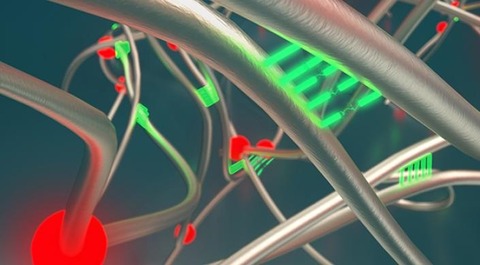Harvard researchers advance self-healing rubber
Cambridge, Massachusetts – Researchers from the Harvard John A. Paulson School of Engineering and Applied Sciences (SEAS) have developed a new type of rubber that is as tough as natural rubber but can also self-heal, the Harvard University school has reported.
In order to make a rubber self-healable, the team needed to make the bonds connecting the polymers reversible, so that the bonds could break and reform, explained a 14 Aug release.
“Previous research used reversible hydrogen bonds to connect polymers to form a rubber but reversible bonds are intrinsically weaker than covalent bonds,” said Li-Heng Cai, a postdoctoral fellow at SEAS. “This raised the question, can we make something tough but can still self-heal?”
Cai, along with Jinrong Wu, a visiting professor from Sichuan University, China, and senior author David Weitz, Mallinckrodt professor of physics and applied physics, developed a hybrid rubber with both covalent and reversible bonds.
The concept of mixing both covalent and reversible bonds to make a tough, self-healing rubber was proposed in theory by Cai but never shown experimentally because covalent and reversible bonds don’t like to mix.
“These two types of bonds are intrinsically immiscible, like oil and water,” said Cai.
The researchers developed a molecular ‘rope’ of randomly branched polymers to tie these two types of bonds together: allowing two previously unmixable bonds to be mixed homogeneously on a molecular scale. This, said Harvard, enabled the creation of a transparent, tough, self-healing rubber.
“Typical rubber tends to crack at certain stress point when force is applied,” the SEAS release noted. “When stretched, hybrid rubber develops so-called crazes throughout the material, a feature similar to cracks but connected by fibrous strands.
“These crazes redistribute the stress, so there is no localized point of stress that can cause catastrophic failure. When the stress is released, the material snaps back to its original form and the crazes heal.”
Harvard’s office of technology development has filed a patent application for the technology and is actively seeking commercialisation opportunities, continued the release, adding that the self-healing ability is appealing for a wide variety of rubber products.
“Imagine that we could use this material as one of the components to make a rubber tire,” said Wu. “If you have a cut through the tire, this tire wouldn’t have to be replaced right away. Instead, it would self-heal while driving enough to give you leeway to avoid dramatic damage.”
But there is still much more to do, said Weitz, who is also director of Harvard’s materials research science and engineering center, co-director of the BASF Advanced Research Initiative, a member of the Kavli Institute for Bionano Science and Technology, and a core faculty member at the Wyss Institute for Biologically Inspired Engineering.
“For materials science, it is not fully understood why this hybrid rubber exhibits crazes when stretched,” concluded Weitz. “For engineering, the applications of the hybrid rubber that take advantage of its exceptional combination of optical transparency, toughness, and self-healing ability remain to be explored.”



